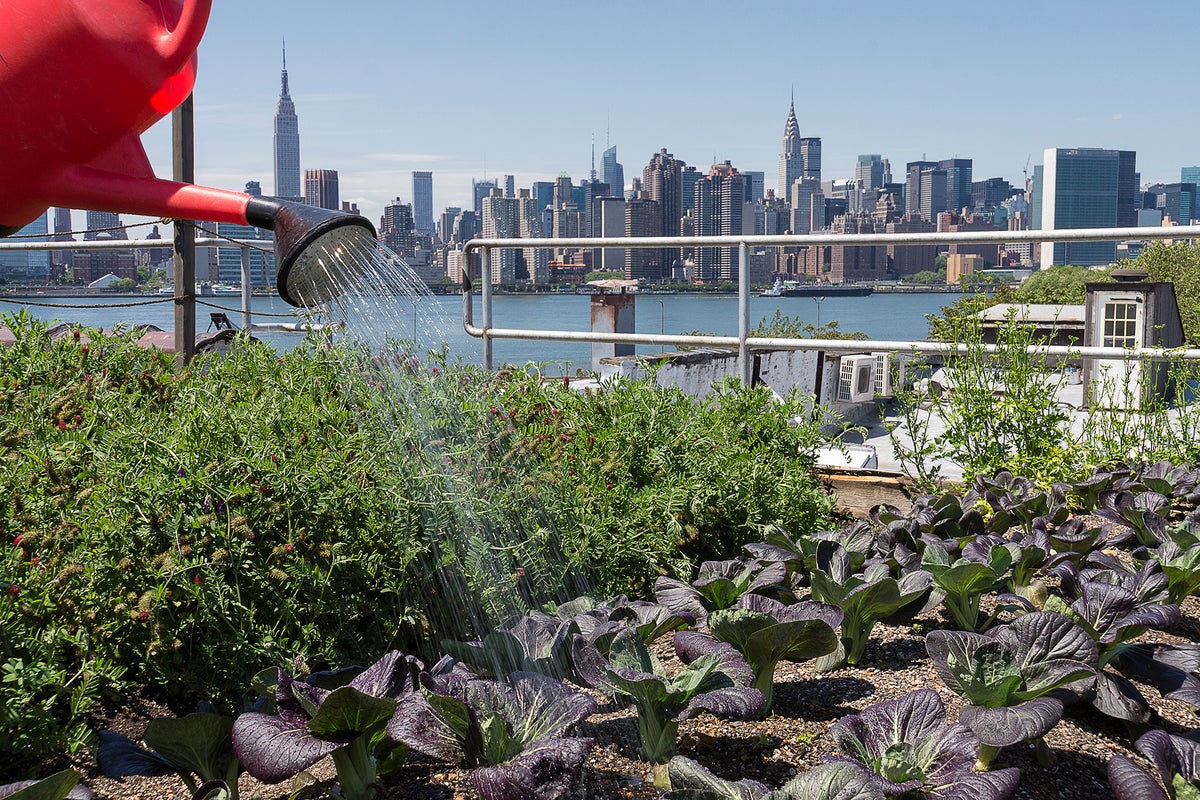Our City Blooming Ideas
Our City Blooming Ideas
Blog Article
The Definitive Guide for City Blooming
Table of ContentsThe City Blooming StatementsWhat Does City Blooming Do?Not known Facts About City BloomingThe 30-Second Trick For City BloomingNot known Incorrect Statements About City Blooming
Interested in expanding food for sale in the City of Chicago? Below is a checklist of frequently asked concerns pertaining to the rules and laws that cultivators need to take into consideration when intending a city farming project.
The zoning change does not modify any type of various other codes managing composting, building authorizations, buying or leasing City had residential or commercial property, company licenses or environmental contamination. There are existing codes that control these problems and they remain in full impact and might apply to your job. Neighborhood gardens are normally owned or taken care of by public entities, public companies or community-based organizations and preserved by volunteers.
Urban farms expand food that is meant to be sold, either on a not-for-profit or for-profit basis. As a result of their business purpose, metropolitan ranches require a business permit. Yes. An area garden is allowed to sell surplus produce that was grown on website if the sales are accessory or secondary to the yard's key objective explained over.
All about City Blooming
The quantity of garden compost product can not exceed 25 cubic lawns at any given time according to the requirements in 7-28-715 of the City's Municipal Code. Due to the fact that the dirt at a lot of brand-new yard sites needs amending, garden compost, soil, wood chips, or various other materials can be acquired to create or enhance the growing room.

If a structure license is called for after that the hoophouse will be thought about an accessory building. You can figure out even more concerning the structure license demands by speaking to the Division of Buildings. The 25,000-square-foot dimension limitation is intended to stop a single neighborhood yard from controling an offered block or taking away from the block's existing residential or industrial character.
The limit does not put on gardens located in Public Open Area (POS) districts. Can there be greater than one area yard that is 25,000 square feet on a single block? Yes. The dimension limit relates to individual yards, not to specific blocks. No. Fence is not needed, nevertheless, gardens that have big car parking locations may be required to install secure fencing or other landscaping functions.
The Best Strategy To Use For City Blooming
B1 & B2 areas call for that all business use tasks be performed inside your home. R areas limit business task. The policies show the function and intent of the Zoning Code. Is fence needed for city farms? Yes. Fences may be called for, in addition to landscaping and testing, for particular auto parking locations and outdoor work or storage space locations relying on location and the certain task taking location.
Yes. Urban ranches require building authorizations and zoning approvals prior to construction. Various other forms of city evaluation may be required depending on particular structures, activities, dimension, landscape design, licensing, public heath and stormwater management concerns. A lot of these demands are identified in the project style or allowing process, nevertheless, the applicant may be liable to individually recognize certain licenses or permits that may be needed.
Yes. The kind of permit is established by what is taking place at the site. The Department of Business Matters and Consumer Security can assist identify the particular sort of organization permit that's required. Yes. Off road auto parking is required for the majority of industrial jobs in Chicago. The required number of parking spaces is based upon the variety of staff members dealing with site and not the square video of the growing space.
Little Known Questions About City Blooming.

A metropolitan farm can market garden compost material produced on website, nonetheless, the operation needs to conform with the guidelines in 7-28-715 of the Chicago Municipal Code. Aquaponic systems are permitted indoors on metropolitan farms in many zoning areas.
As much as 5 hives or swarms of honey bees might be maintained as an accessory use. Beekeepers should register with the Illinois Department of Agriculture. To find out more regarding the suggested zoning amendment you might speak to the Department of Real Estate and Economic Development, Bureau of Preparation and Zoning at 312.744.8563.
Farming in cities and urban locations A city farm in Chicago. Urban agriculture describes numerous techniques of growing. https://cityblooming.start.page, processing, and dispersing food in urban locations. The term also uses to the location activities of animal husbandry, aquaculture, beekeeping, and cultivation in a city context. Urban farming is distinguished read the article from peri-urban farming, which takes place in country areas beside residential areas.
Unknown Facts About City Blooming
It can involve a motion of organic farmers, "foodies" and "locavores", who look for to form social networks based on a shared principles of nature and area holism. These networks can develop using official institutional support, becoming incorporated right into neighborhood town as a "transition community" movement for lasting city advancement.
The a lot more straight accessibility to fresh vegetable, fruit, and meat products that may be understood with city farming can improve food safety and security and food security while decreasing food miles, causing reduced greenhouse gas exhausts, thereby adding to environment adjustment mitigation. Several of the initial proof of city farming originates from Mesopotamia.
Report this page